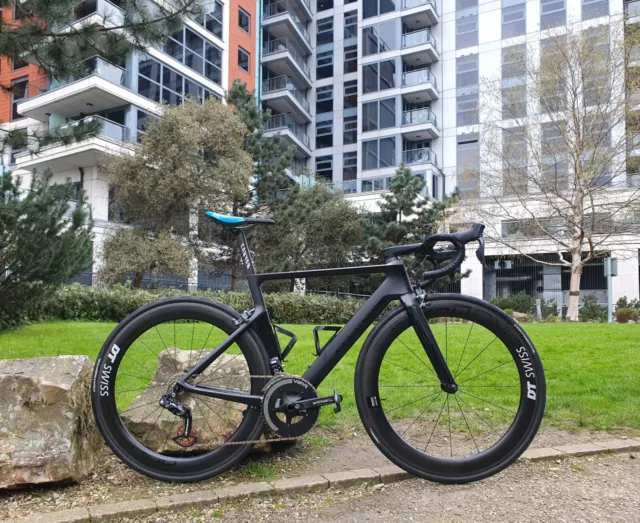A road bike power meter uniquely measures watts output, providing real-time data to optimize performance and training through precise pedaling analysis.
Pedal-Based Power Meters: My Versatile Choice
The choice of a pedal-based power meter sold by well-known brands such as Garmin and Favero to facilitate easy installation and work effectively with multiple bikes. These models measure power output at a point of force application, meaning at the tool and object with which cyclists interact when riding – pedals. They are considered to be highly accurate and portable since they can be placed on bicycles within minutes and switched between them. Besides, dual-side technology is common with this meter type, meaning that it can differentiate between the power output generated by one’s left and right leg. It is vital to help people address muscle strength imbalances and improve their pedaling mechanics.
Power meters in pedals also usually come with additional features, such as cadence sensors. In some cases, the technology allows cyclists to track their activity in real time through Bluetooth synchronization with smartphones and computers. If people decide to use this space-oriented data in a training regimen, it would help them push their limits and achieve considerable gains in both endurance and speed. Moreover, people who cycle once in a while would also be interested in the length by which the batteries of these meters last, which is approximately 50-120 hours of use. It is also vital to mention that this type of meter is especially prevalent among connoisseurs of technology capable of facilitating the dynamic environment of road training and supply cyclists with heaps of data. The latter is typically crucial for constructing a training program tailored to individuals and reflecting their varying over time capabilities.

Accurate Data and Ease of Use
Power meters for road bikes are a powerful option for athletes who need an exact and easily interpretable assessment of their successes. In this way, they are excellent for fastidious athletes who want to be sure that their equipment gives them precisely the information they require. The validity of modern power meters is about +/- 1 – 2%, meaning that for modern cyclists, all their energy information remains under control .It is more convenient to monitor training load and recovery dynamics when preparing for competitions.
Diversity of External Conditions
This parameter is also a good feature of modern power meters. Existing models are not affected by the specific conditions of use, so it does not matter whether you are cycling outside on a cool morning or a hot, humid afternoon. There is no need to worry about recalibrating the device at the beginning of training or later, on another site. Cyclists can be sure that the information the power meter is giving them corresponds to their maximum efforts. Manufacturers like Quarq and SRM prefer this type of power meter they make, as measurements can be misinterpreted even in small quantities in today’s high-level cycling stages, which are vital for professionals.
Simplicity of the User Interface
User-friendliness is yet another good feature of modern power meters. Many of them can work wirelessly and can be connected to smartphones, laptops, PCs, or cycling computers with Bluetooth or ANT + devices. Thanks to this, all data can be stored and can be viewed with the integration of the device in the same program. cyclists. In addition, with just a few taps and swipes, they can see the data directly on the screen: for example, how much energy per second they are generating at a given moment or how much effort they have put into their previous rides. Thus, combining this with the new training plans discussed earlier and their analysis can also simplify planning for the future.
Durability and Resistance to Elements
The manufacturers of power meters for road bikes ensure the devices’ durability as cyclists are exposed to the rough conditions enabling them to handle such. The pressure they impact and the variety of environments characterizes the devices. Accordingly, the premier attribute is their robustness. The features of top-tier power meters include their water-resistance properties up to IPX7. In other words, the devices can be immersed in water up to one meter deep for about half an hour. It addresses the maximum possible conditions as apart from torrential rains, the cyclists’ power meters can be mistakenly submerged in any body of water on the road.
Contributors to Robustness
The durable construction varies depending on the materials used. The most popular are stainless steel and a series of composites that are durable yet not too heavy. They should be strong enough not to crack from the pressure yet be light to avoid excessive weight on the bike. For example, the Shimano power meter features a hollow forged alloy. The substance offers resistance to corrosion to compensate for water immersion. At the same time, it is vital that the durability does not affect the ride’s dynamics due to the materials excessively weighing the bike down.
Environmental Resistance Features
As expected, apart from being wet, the power meters for road cycling are designed to prevent the too-low or too-high temperatures and mechanical vibrations. The devices can be used in intense temperatures from -10°C to 50°C (14°F to 122°F). The riders can also enjoy vibration paved paths and rough cobblestones as the power meters will be resistant to the recurring mechanical stress.
Economics and Efficiency
Purchasing a road bike power meter is not just an investment in a gadget but an investment in an extremely highly efficient tool that provides tremendous economic value over time. By using a power meter to ride more effectively, the cyclists can optimize the efficiency of their training and prevent any wasted efforts, thereby saving considerable resources on every ride. This precision will allow the riders to improve at a much faster rate than they would with less advanced equipment, avoiding the need for more expensive coaching or training programs.
Cost effectiveness over a prolonged period
At first, investing in a high-quality power meter may seem expensive, as the cost of the device varies from $400 to well over $1000. However, the long-term savings on these devices are considerable – thanks to their superior efficiency and the ability to train more effectively, the cyclists can achieve their goals and save money that they would have had to spend on other training expenses otherwise. Moreover, the power meters are able to last even in heavy use, with a lifespan of several years, which can be especially useful for a professional cyclist with multiple bikes.
Maximizing training efficiency
One of the biggest advantages of power meters is the ability to get instant feedback on the rider’s output and how well he or she is converting the consumed fuel into their output. Instead of having to guess how productive their training session was, they can observe exact figures, such as their average power, normalized power or energy expenditure. This data-driven approach ensures that the cyclist’s every pedal stroke is fully optimized to maximize the performance increase effects, reducing the time and energy spent on ineffective exercises.




